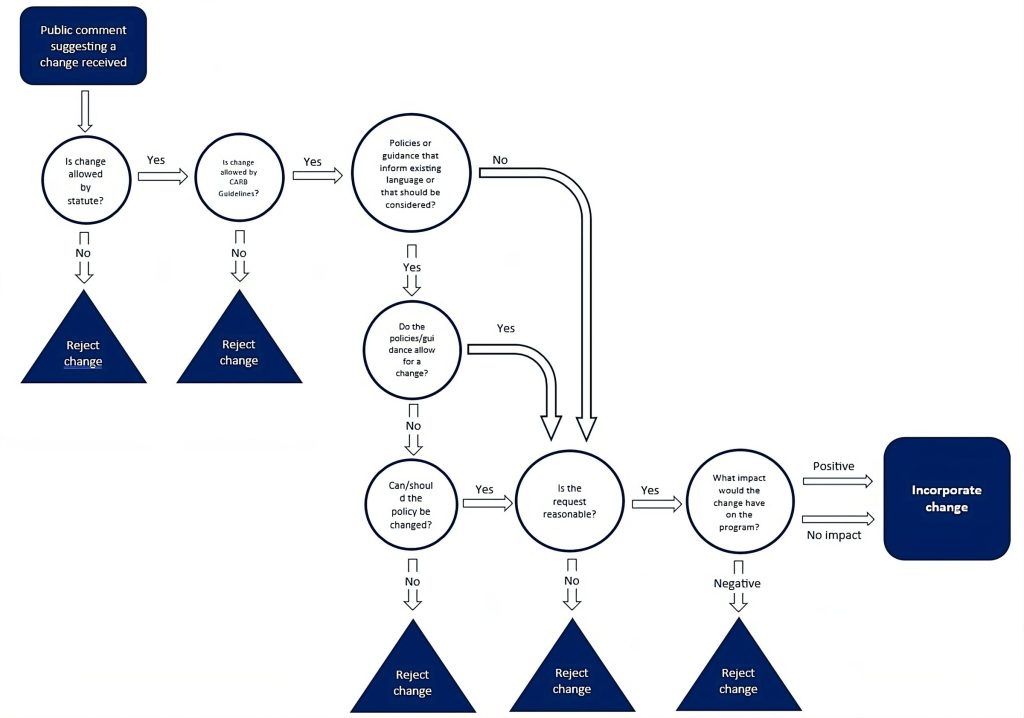Iterative and Inclusive Program Design Model: Incorporating Community Feedback into Guidelines and Program Design
Most grant programs are created by statute, which typically provides a general overview of the program objectives and requirements. In many cases, the implementing agency can decide how to achieve program objectives. To ensure implementation strategies are both equity-driven and effective, program designers must systematically gather input through community outreach and engagement and incorporate feedback into the program guidelines in a meaningful and timely way. When community input conflicts with statutory objectives, an organizational culture of problem-solving can help the team identify alternative solutions that address community needs and maintain compliance.
Outcomes
- Addresses inequitable or ineffective outcomes produced by guideline provisions
- Program guidelines adapt and respond to the changing needs of communities
- Identifies issues and alternative areas of focus that can inform changes beyond the immediate grant program
How to Do This
To continually respond to community needs, program guideline content requires ongoing refinement to address evolving circumstances and issues. Meaningful engagement may include accessible in-person and virtual workshops, extended public comment periods, and consultation. Internally, monitoring and evaluating program outcomes can also inform changes necessary to improve program effectiveness.
Increased accessibility to workshops should consider:
- In-person workshop location: Is the location accessible by quality multimodal transportation options? (Quality transit stop; safe pedestrian and bike infrastructure; affordable public parking; transportation budget support for public participants, etc.)
- Language accessibility: provide live translation (including ASL); host meetings in the community’s dominant language; include closed captions on virtual meetings; etc. Example: Caltrans conducted the 2022 Statewide Equity Listening Sessions in partnership with the California Transportation Commission (CTC), California State Transportation Agency (CalSTA), and ICF International, Inc. (ICF). The listening sessions were designed to hear from communities that have been historically marginalized in the planning, funding, and delivery of transportation infrastructure. Sessions were held in person and virtually based on community preference. Some meetings were held in Spanish, with English translation provided on request.
- Workshop follow-up: Record and share the workshop with the public; provide a quick factsheet or frequently asked questions and their responses; etc.
Guidelines should respond to changing community needs. However, the guidelines should not be changed year over year without sufficient justification. Changing guidelines requires significant work for both the administrators and the applicants. Lower-resource communities are disproportionally impacted by changes, as higher-resource communities and entities have the staff capacity and knowledge to update/change/iterate more quickly than those without. Key considerations when modifying program guidelines include:
- Is this change required by statute or another governing body?
- Is this change identified as a priority by the communities served?
- Will this change improve clarity for applicants or reviewers?
- Will this change reduce the complexity of applying while maintaining the integrity of the program?
